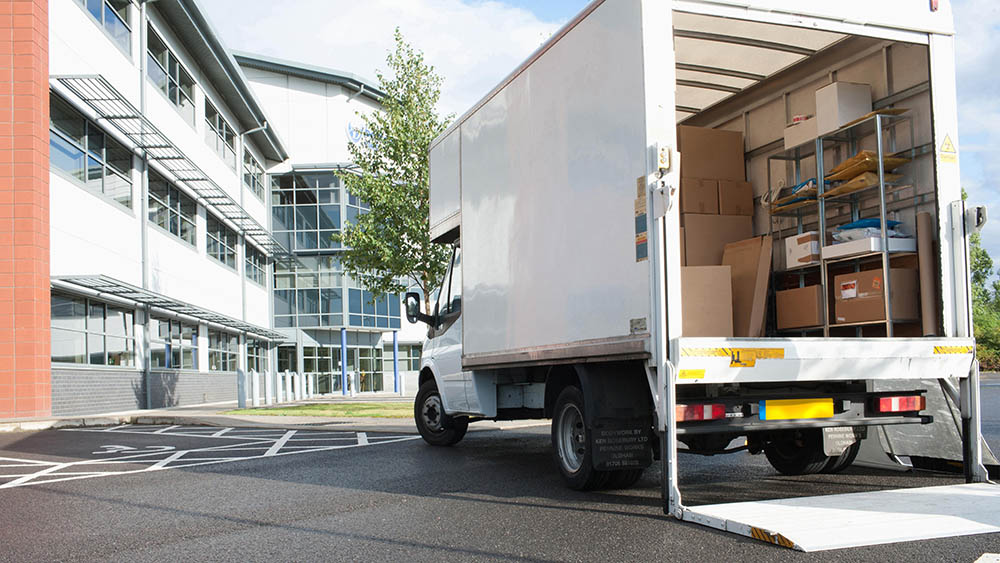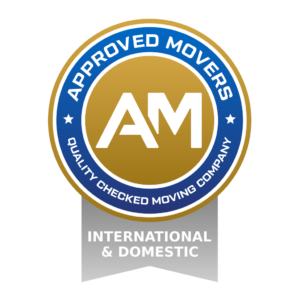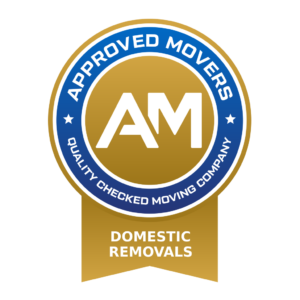
The Removalspal Guide to Setting Up a Removal Company
Setting up a removal company can be a lucrative venture, especially in today’s fast-paced world where individuals and businesses frequently relocate. Whether it’s a home or office move, customers seek reliable, efficient, and comprehensive removal services. Below, we outline the essential steps and considerations for setting up a removal company and highlight how Removalspal can support your digital and material needs.
1. Business Planning
Begin with a detailed business plan. This plan should outline your business model, target market, competitive analysis, pricing strategy, and financial projections. Consider the scale at which you want to operate – local, national, or international removals – and define your niche accordingly. The business planning phase is crucial for the successful launch and sustainable growth of a removals company. Here’s a deeper dive into what you’ll need to consider:
Market Research
- Identify Your Target Market: Understand who your customers are. Are you targeting residential moves, commercial relocations, or both? Consider demographics such as age, income level, and geographic location.
- Competitive Analysis: Research your competitors to identify what services they offer, their pricing strategy, and their market position. This helps you find a unique value proposition for your business.
- Demand and Supply Analysis: Assess the demand for removal services in your intended operating areas. Understand the peak moving times and how supply matches up to demand.
Business Model Definition
- Services Offered: Decide on the range of services you will offer. This could include basic removal services, packing and unpacking services, storage solutions, and special handling for fragile items.
- Pricing Strategy: Your pricing strategy should be competitive yet profitable. Consider offering different pricing packages or personalised quotes based on the specifics of each job.
- Operational Area: Define the geographical area your services will cover. Starting locally and expanding as the business grows can be a prudent approach.
Financial Planning
- Startup Costs: Calculate the initial investment needed to start your business. This includes the cost of vehicles, packing materials, equipment, insurance, and any initial marketing expenses.
- Revenue Streams: Identify various revenue streams. Apart from basic moving services, consider offering packing materials, storage, or specialised services as additional revenue sources.
- Break-even Analysis: Understand how long it will take for your business to become profitable. This involves calculating your fixed and variable costs against your anticipated revenue.
- Cash Flow Management: Effective cash flow management is critical, especially in the early stages. Plan for the timing of incoming and outgoing payments to ensure you have enough working capital.
Strategic Development
- Marketing and Sales Strategy: Develop a marketing plan that includes both online and offline strategies. Digital marketing, social media, local advertising, and partnerships can all be part of your approach.
- Growth Strategy: Plan for the future growth of your business. Consider how you can scale your operations, whether by expanding your service area, increasing your service offerings, or investing in technology to improve efficiency.
- Risk Management: Identify potential risks to your business, such as market fluctuations, operational challenges, or financial uncertainties, and develop strategies to mitigate these risks.
Execution Plan
- Timeline: Create a timeline for launching your business, including key milestones such as business registration, vehicle purchase, website launch, and the first customer move.
- Responsibilities: Assign roles and responsibilities to your team members, ensuring everyone knows what they need to do to achieve your business objectives.
- Measurement and Adjustment: Establish key performance indicators (KPIs) to measure the success of your business. Review these metrics regularly and be prepared to adjust your plan as necessary to ensure continued success.
When you begin the plans for setting up a removal company, it’s vital to consider all of the above steps. Knowing how you will design your business, what audience you will target, and how you’ll achieve this are all essential elements of the process.
2. Legal Requirements
Ensure your business complies with local and national regulations. This involves registering your business, obtaining necessary licenses, and ensuring you have the right type of insurance to protect your business and your clients’ possessions during the move.
- Business Registration: Start by registering your business with the appropriate local or national authorities. This could involve setting up a limited company, a partnership, or a sole proprietorship, depending on your business structure and preferences.
- Licenses and Permits: Depending on your location, you may need specific licenses to operate a removals company. This could include a goods vehicle operator’s license if your vehicles exceed a certain weight limit. Research local regulations to ensure compliance.
- Insurance: Acquiring the right insurance is crucial for protecting your business and your clients’ belongings. At a minimum, you’ll need liability insurance and goods-in-transit insurance. Additionally, you will also need vehicle insurance for your fleet, employer’s liability insurance if you have staff, and public liability insurance.
- Health and Safety: Comply with health and safety regulations to protect your employees and clients. This involves risk assessments, proper employee training, and ensuring that work is carried out safely, particularly when lifting heavy items or navigating challenging environments.
- Data Protection: If you’re collecting and storing personal data from your clients, make sure you comply with data protection regulations, such as the GDPR in the EU. This includes obtaining consent to collect data, securing personal information, and allowing customers to access or request deletion of their data.
- Contractual Agreements: Develop clear contracts for your services, outlining what is included, pricing, terms of service, and liability clauses. This protects both your business and your clients, ensuring there are clear expectations and legal recourse if disputes arise.
- Ensure all data is stored in compliance with GDPR, and your systems are appropriately secured.
3. Acquire the Right Equipment and Materials
Your removals company will need reliable vehicles, such as vans or trucks, equipped with GPS for efficient navigation. Additionally, the quality of your packing materials can significantly impact client satisfaction. Removalspal offers all the packing materials you need to operate successfully, including boxes, floor protection, padded bags, and blankets, ensuring the safety and security of items during transit.
- Vehicles: Your fleet is the backbone of your removals company. Invest in reliable, spacious vehicles that can accommodate a variety of moving jobs. Ensure they are well-maintained and equipped with GPS for efficient route planning. Consider the size and type of vehicles based on the services you offer; larger trucks may be necessary for full-house moves, while smaller vans might suffice for single-item or small apartment moves.
- Packing Materials: The quality of your packing materials can significantly affect the safety and security of your clients’ belongings during transit. Removalspal can supply everything you need, from sturdy boxes of various sizes to protective wrapping materials, padded bags, and blankets. Quality floor protection is also crucial to prevent damage during the moving process.
- Equipment: Invest in professional moving equipment to facilitate safe and efficient moves. This includes dollies, hand trucks, furniture pads, straps for securing items during transport, and tools for dismantling and reassembling furniture.
- Technology: Utilise technology to streamline your operations. This could include management software to keep track of items during a move, route planning software to optimise travel times and fuel usage, and customer relationship management (CRM) systems to manage bookings and customer service.
- Uniforms and Branding: Providing your team with uniforms not only presents a professional image but also serves as a branding opportunity. Similarly, branding your vehicles can serve as mobile advertising, increasing your visibility in the areas you serve.
4. Hiring Skilled Staff
Hire a team of professional and experienced staff who are trained in handling, packing, and transporting items safely. Your staff should be capable of providing excellent customer service, as their professionalism directly reflects on your business.
- Recruitment: Start by identifying the roles you need to fill, such as drivers, packers, customer service representatives, and logistics coordinators. Utilise job boards, recruitment agencies, and industry networks to find candidates with the right skills and experience.
- Skills and Experience: Look for candidates with experience in logistics, transportation, or customer service. Skills such as driving, packing, problem-solving, and communication are vital. Drivers should have the appropriate licenses and a clean driving record.
- Training: Implement a comprehensive training program that covers safe lifting techniques, packing methods, customer interaction, and use of equipment. Regular refresher courses can help maintain high standards.
- Culture and Values: Foster a company culture that values professionalism, respect, teamwork, and customer satisfaction. Your staff’s attitude and behaviour significantly impact your company’s reputation.
- Retention Strategies: Offer competitive salaries, benefits, and opportunities for professional development. Recognising and rewarding outstanding performance can help retain top talent.
5. Digital Presence and Marketing
In today’s digital age, having a strong online presence is crucial. Removalspal provides a one-stop shop for all your packaging materials and digital needs, including website creation, search engine optimisation (SEO), digital marketing, and advertisement campaigns. A user-friendly website, coupled with effective SEO strategies, can significantly increase your visibility to potential clients. Removalspal makes this easy for you by providing a one-stop shop for all the following services:
- Website Development: Your website should be visually appealing, easy to navigate, and mobile-friendly. It should clearly outline your services, pricing, and contact information. Incorporate customer testimonials and an FAQ section to build trust.
- Search Engine Optimisation (SEO): Invest in SEO to improve your website’s visibility in search engine results. Use relevant keywords, optimise website speed, and create quality content to rank higher.
- Digital Marketing: Leverage social media platforms, email marketing, and online ads to reach potential customers. Tailored content that addresses customer pain points can increase engagement and conversions. You may also want to check out our guide to common email marketing mistakes.
- Analytics and Feedback: Use analytics tools to track your website and campaign performance. Customer feedback, collected through surveys or online reviews, can provide insights to refine your marketing strategies.
6. Offer Comprehensive Services
Consider offering a range of services to cater to different needs, such as packing and unpacking services, temporary storage solutions, and specialised removals for delicate items. This can give you a competitive edge in the market.
- Packing and Unpacking Services: Offer professional packing and unpacking services to simplify the moving process for your clients. Use high-quality materials and techniques to ensure items are safely transported.
- Storage Solutions: Providing short-term or long-term storage options can be a significant value-add for customers between moves or those needing extra space.
- Specialised Removals: Cater to niche markets by offering removal services for specific items such as pianos, antiques, or fine art. This requires specialised knowledge and equipment but can differentiate your business in the market.
- Additional Services: Consider other services that could benefit your customers, such as house cleaning after a move, setting up utilities at the new location, or offering a handyman service for minor repairs.
- Customisation and Flexibility: Allow customers to customise their service packages based on their specific needs and budget. Providing flexible solutions can enhance customer satisfaction and loyalty.
7. Customer Service and Feedback
Establish a system for customer service and feedback. Happy clients are more likely to recommend your services to others. Use customer feedback to continuously improve your services and resolve any issues promptly.
- Customer Support System: Implement a robust customer support system that offers multiple channels for communication, including phone, email, and social media. Ensure your team is trained to respond promptly and professionally.
- Feedback Mechanisms: Create easy-to-use feedback forms on your website, follow up with customers after a service has been completed, and encourage reviews on social media and online review sites. Listening to your customers is key to understanding their needs and expectations.
- Resolution Process: Develop a clear process for handling complaints and resolving issues. Swift, transparent, and fair resolutions can turn a potentially negative experience into a positive one, building trust and loyalty.
- Continuous Improvement: Use customer feedback to identify areas for improvement and innovation in your services. Regularly update your training, processes, and services based on this feedback to enhance customer satisfaction.
- Loyalty Programs: Consider creating loyalty programs or referral incentives to encourage repeat business and referrals. Happy customers are your best advocates.
8. Networking and Partnerships
Build relationships with related businesses such as real estate agents, property managers, and storage facilities. These partnerships can lead to referrals and expand your customer base.
- Identify Potential Partners: Look for businesses and professionals who serve the same target market but are not direct competitors, such as real estate agencies, property management companies, and storage service providers.
- Mutual Benefits: Offer mutual referral programs where both parties benefit from referring customers to each other. This can be structured through formal agreements or on an informal basis.
- Community Engagement: Participate in local business events, trade shows, and community activities to increase your visibility and network with potential partners. Being active in your local community can open up numerous opportunities.
- Online Networking: Use professional networking sites like LinkedIn to connect with potential partners. Join industry-specific groups to stay informed about trends and meet like-minded professionals.
- Partnership Marketing: Collaborate on marketing efforts, such as co-hosting events, joint advertising campaigns, or bundled service offerings, to extend your reach and provide added value to your customers.
9. Compliance and Quality Assurance
Ensure your services comply with industry standards and regulations. Implement quality assurance processes to maintain high service standards, and consider obtaining certifications or memberships in professional bodies to enhance credibility.
- Regulatory Compliance: Stay informed about local, national, and industry-specific regulations affecting your business. This includes vehicle regulations, safety standards, and employment laws. Regularly review and update your policies to ensure compliance.
- Quality Assurance Processes: Develop and implement quality assurance processes that cover every aspect of your service, from initial customer contact to the completion of the move. Regular audits and checks can help maintain high service standards.
- Training and Development: Invest in ongoing training for your staff to ensure they are up-to-date with the latest industry standards, packing techniques, and customer service practices.
- Certifications and Memberships: Obtaining industry certifications or memberships in professional bodies can enhance your credibility and demonstrate your commitment to quality and professionalism. Look for relevant associations in your country or region.
- Feedback and Continuous Improvement: Incorporate quality assurance feedback mechanisms to monitor and evaluate the quality of service delivered. Use this feedback for continuous improvement, addressing any gaps in service quality promptly.
10. Continuous Improvement and Expansion
In the dynamic world of the removals industry, the journey of setting up a removal company is just the beginning. To thrive and stay competitive, it’s crucial for businesses to continually seek ways to refine and augment their service offerings. Keeping abreast of the latest industry trends and tuning into shifts in customer preferences can reveal valuable opportunities for innovation and service diversification.
For those in the process of setting up a removal company, expanding your array of services is a strategic move towards catering to a broader spectrum of customer needs. This might include introducing niche moving services for delicate items like pianos, art, or antiques, or broadening your portfolio to include related services such as cleaning, packing, and temporary storage solutions. Such expansions not only enhance the value you deliver to your customers but also open new revenue channels for your business.
Additionally, contemplating the expansion of your geographic footprint is another pivotal consideration. Starting with local moves and progressively extending your services to national or even international relocations can significantly widen your customer base. This geographical expansion should be meticulously planned, considering the logistics, costs, and market demand in new territories.
Leveraging technological innovations is also key to enhancing your service quality. From sophisticated logistics software that optimizes route planning and inventory management to digital marketing strategies that bolster customer engagement, technology can give your company a competitive advantage.
Furthermore, nurturing a culture of feedback is essential for ongoing improvement. Encouraging customers to share their experiences and suggestions offers priceless insights, allowing you to refine your services to better meet customer expectations.
In conclusion, the path to setting up a removal company is marked by continuous learning, adaptation, and strategic expansion. By staying informed about industry developments, embracing innovation, and responding to the changing needs of your customers, you can ensure that your removals company not only survives but flourishes in the competitive market landscape.



